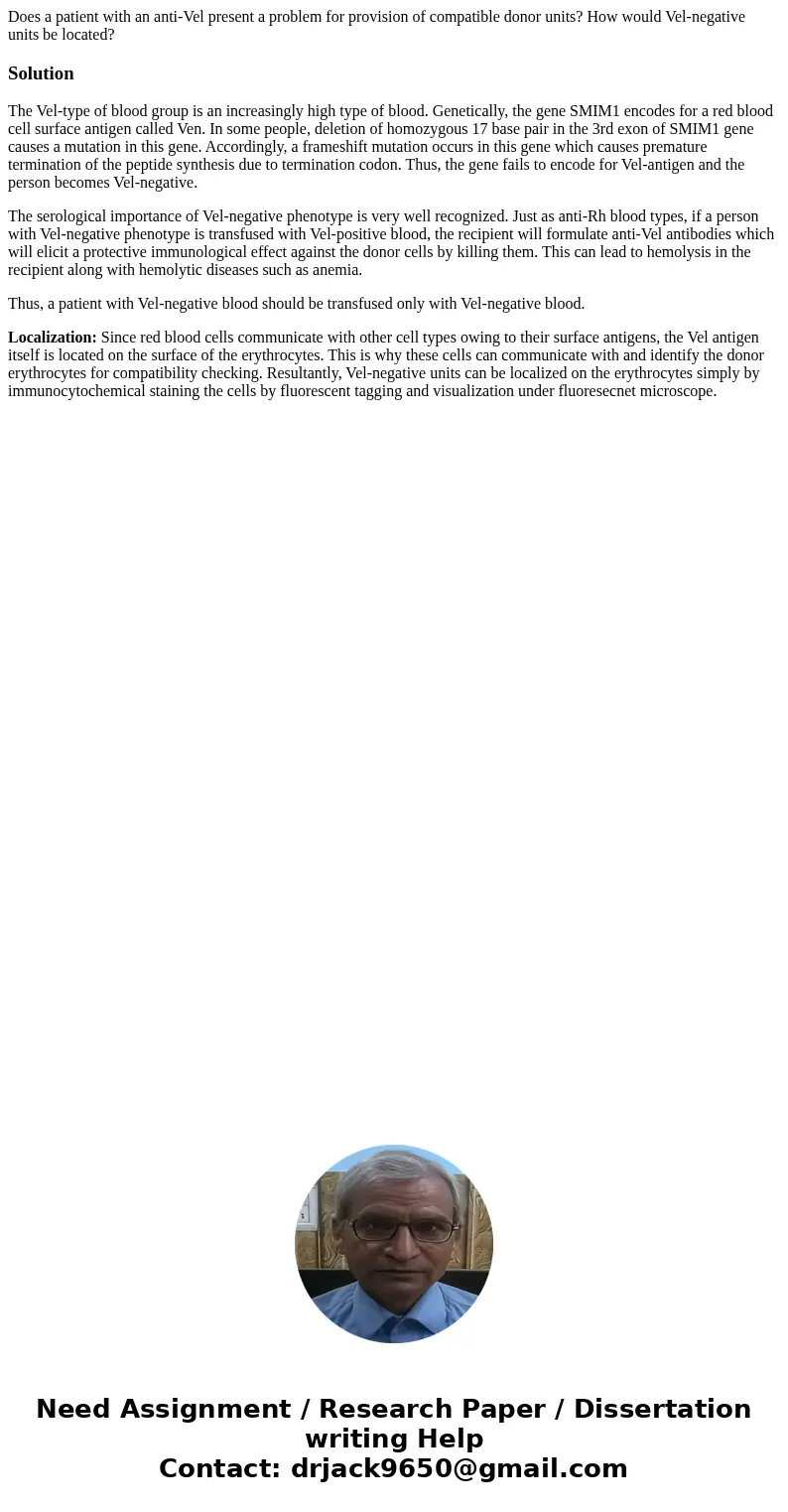Does a patient with an antiVel present a problem for provisi
Does a patient with an anti-Vel present a problem for provision of compatible donor units? How would Vel-negative units be located?
Solution
The Vel-type of blood group is an increasingly high type of blood. Genetically, the gene SMIM1 encodes for a red blood cell surface antigen called Ven. In some people, deletion of homozygous 17 base pair in the 3rd exon of SMIM1 gene causes a mutation in this gene. Accordingly, a frameshift mutation occurs in this gene which causes premature termination of the peptide synthesis due to termination codon. Thus, the gene fails to encode for Vel-antigen and the person becomes Vel-negative.
The serological importance of Vel-negative phenotype is very well recognized. Just as anti-Rh blood types, if a person with Vel-negative phenotype is transfused with Vel-positive blood, the recipient will formulate anti-Vel antibodies which will elicit a protective immunological effect against the donor cells by killing them. This can lead to hemolysis in the recipient along with hemolytic diseases such as anemia.
Thus, a patient with Vel-negative blood should be transfused only with Vel-negative blood.
Localization: Since red blood cells communicate with other cell types owing to their surface antigens, the Vel antigen itself is located on the surface of the erythrocytes. This is why these cells can communicate with and identify the donor erythrocytes for compatibility checking. Resultantly, Vel-negative units can be localized on the erythrocytes simply by immunocytochemical staining the cells by fluorescent tagging and visualization under fluoresecnet microscope.

 Homework Sourse
Homework Sourse